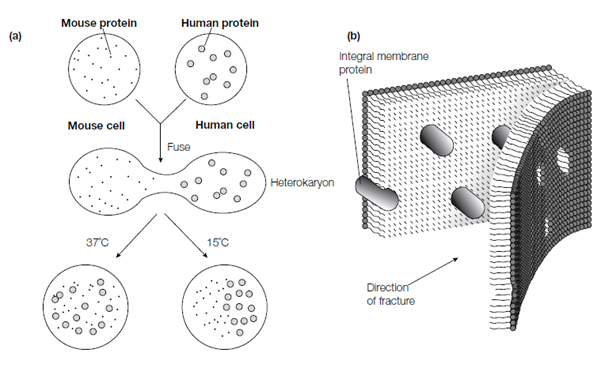Integral membrane protein movement and distribution
Various proteins are free to take a move laterally in the plane of the bilayer. One experiment used to show this included fusing cultured mouse cells with human cells under appropriate conditions to form a hybrid cell which is called as a heterokaryon. A mouse cells were labeled with the mouse protein-specific antibodies to that the green-fiuorescing dye fiuorescein had been covalently attached, similarly the human cells were labeled with the red-fiuorescing dye rhodamine. Upon cell fusion, the human and mouse proteins as seen under the fiuorescence microscope were segregated on the two halves of the heterokaryon in figure. After 37°C in 40 min, moreover, the mouse and human proteins had completely intermingled. Lowering the temperature to follows 15°C inhibited this procedure, denotes in which the proteins are free to diffuse laterally in the membrane and which this movement is slowed as the temperature is lowered. It should be noted, by, that some integral membrane proteins are not free to move laterally in the membrane since they interact with the cytoskeleton inside the cell.
The distribution of proteins in membranes can be revealed through electron microscopy using the freeze–fracture methods. In this method, a membrane specimen is rapidly frozen to the temperature of liquid nitrogen

Figure: (a) Movement and (b) distribution (as shown by freeze–fracture electron microscopy) of integral membrane proteins.
–196°C and then fractured through a sharp blow. The bilayer frequently splits into mono- layers, revealing the interior. The exposed surface is then coated with a film of shadowed and carbon with platinum in order for the surface to be viewed in the electron microscope. The fractured surface of the membrane is revealed to have numerous randomly spread protuberances which correspond to integral membrane proteins.